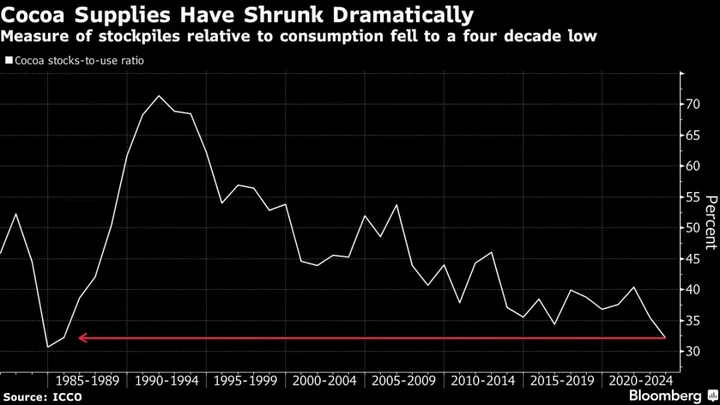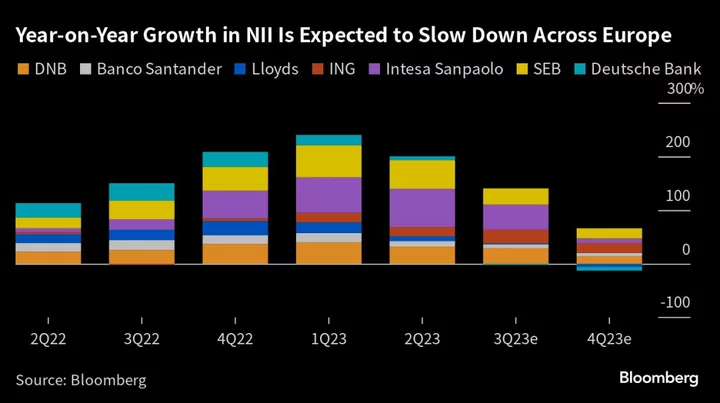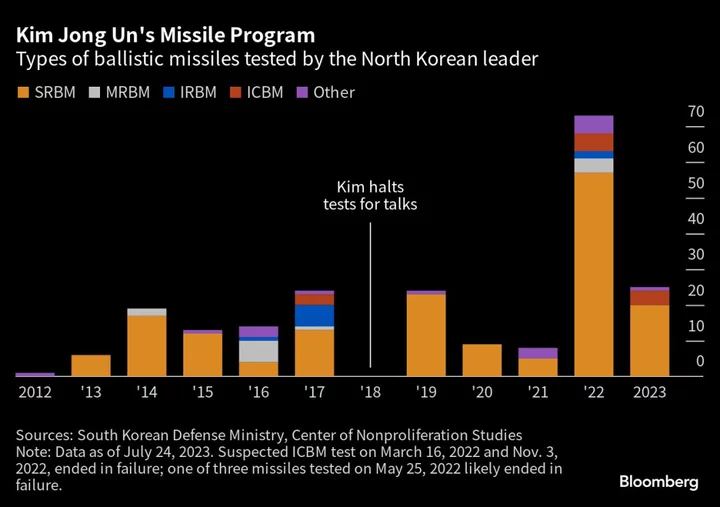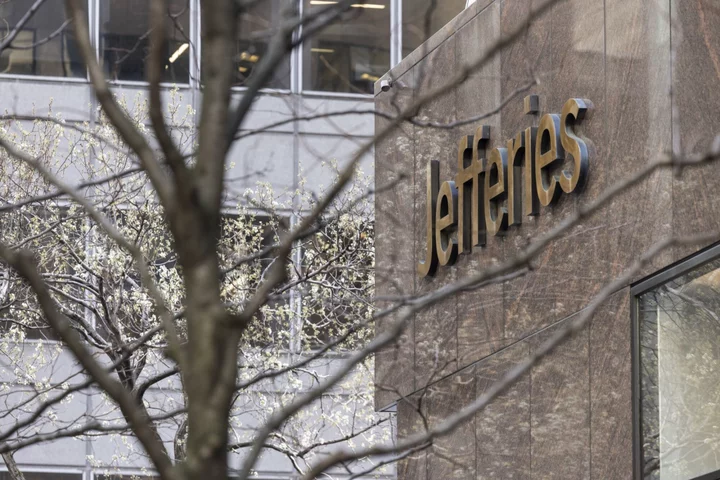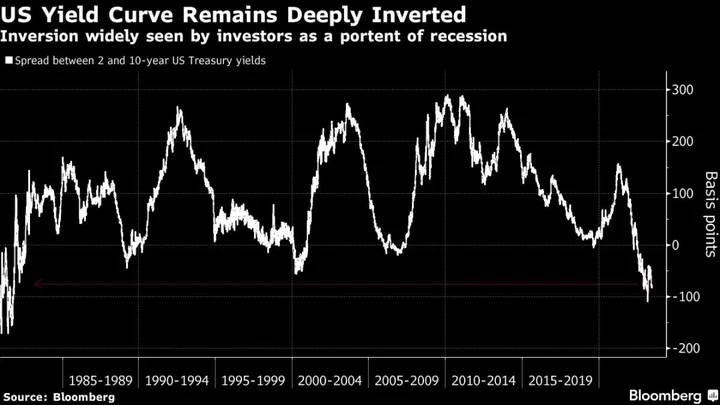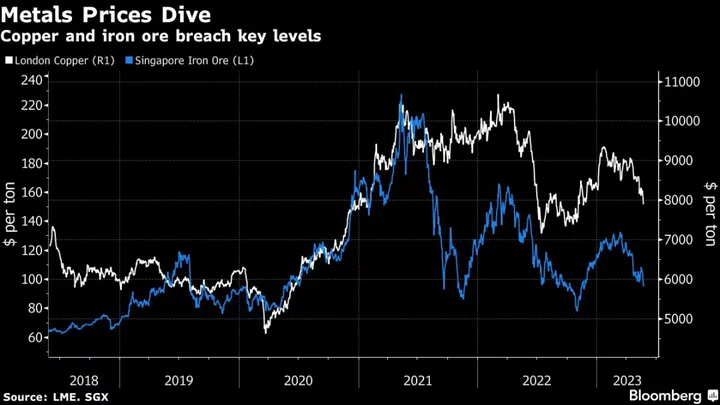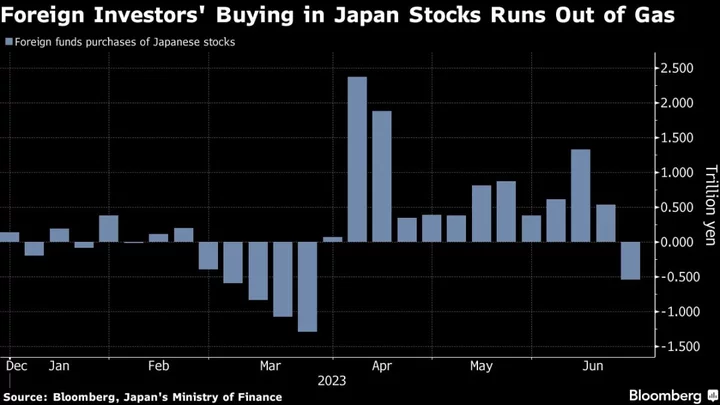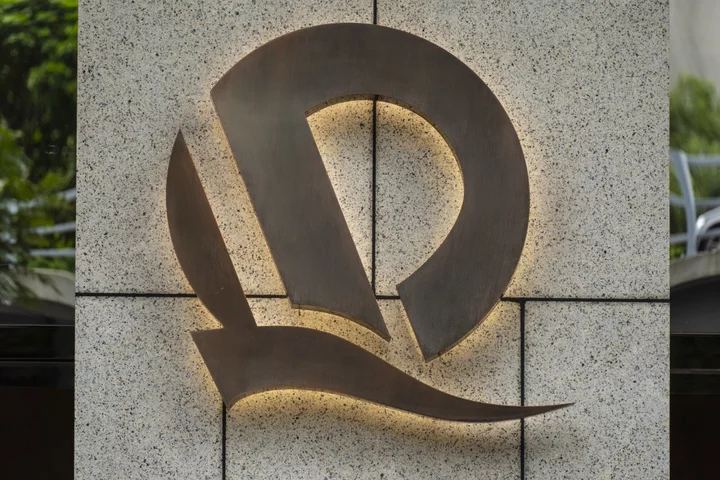The biggest cocoa trade in more than a decade is rattling the London exchange, bringing back memories of when a hedge fund manager known as “Chocfinger” tried to corner the market.
Two years of deficits have dramatically reduced stockpiles of the key chocolate ingredient, with a measure of supplies at its lowest in four decades. That’s left traders vulnerable to a squeeze — when they’re unable to find enough supplies to deliver to buyers as contracts expire, and are forced to buy back futures.
The rush to avoid having to deliver beans at expiration in about a week has sent cocoa for July to a premium as high as £240 pounds a ton to the next futures contract. The last time a similar trade happened in London was in 2010, when Anthony Ward, who managed Armajaro Asset Management LLP’s CC+ fund — famous among commodity traders — took one of the largest-ever deliveries of cocoa on the London exchange, a move that led to a surge in prices.
The latest trades have been fueled by tight supplies after production fell short of demand for two consecutive years, driving the global stocks-to-use ratio — a measure of reserves relative to consumption — to 32.2%, the lowest since the 1984-85 season, according to data from the London-based International Cocoa Organization.
To make matters worse, buyers had no option but to hit the market. Many chocolate makers which stocked up during the pandemic fearing supply disruptions had been using up their reserves, delaying purchases while waiting for lower prices. Their strategy has backfired.
Pandemic Fallout
“Buyers have been behind in purchases,” said consultant Judy Ganes, president of J. Ganes Consulting, who has followed markets for more than 30 years. “As prices climbed and there were concerns of even higher prices, they threw in the towel to buy more.”
Chocolate makers didn’t have enough supplies, and let their futures cover run low, Ganes added. Earlier this year, commercial players held the biggest net-short position on record, meaning they were betting on lower prices, exchange data going back at least a decade showed.
That’s all happening just as an El Niño weather pattern risks further disrupting global production, and top growers Ivory Coast and Ghana have already sold a large part of their crop for next season.
OPEC of Cocoa
In the physical market, beans from the two countries for next season are trading at a premium of at least £40 to £60 a ton to the futures market, according to traders familiar with that matter, who asked not to be named because they are not allowed to speak to the media.
That cost comes on top of a hefty fee of $400 a ton introduced by the producers a few years ago with the aim of boosting farmer income, a cartel-like move that has led to them being dubbed the OPEC of cocoa.
Cocoa supplies in Europe are already tighter than in the US, and a fire at a Vollers Group GmbH warehouse in Amsterdam earlier this year damaged some supplies, the company said on its website.
A similar squeeze affected the New York cocoa market a few years ago, when Hershey Co. took the unusual step of directly sourcing a large amount of cocoa through the ICE Futures US exchange instead of buying beans in the physical market, allowing it to obtain cheaper supplies.
--With assistance from Megan Durisin and Alex Longley.
Author: Isis Almeida, Dayanne Sousa and Mumbi Gitau

